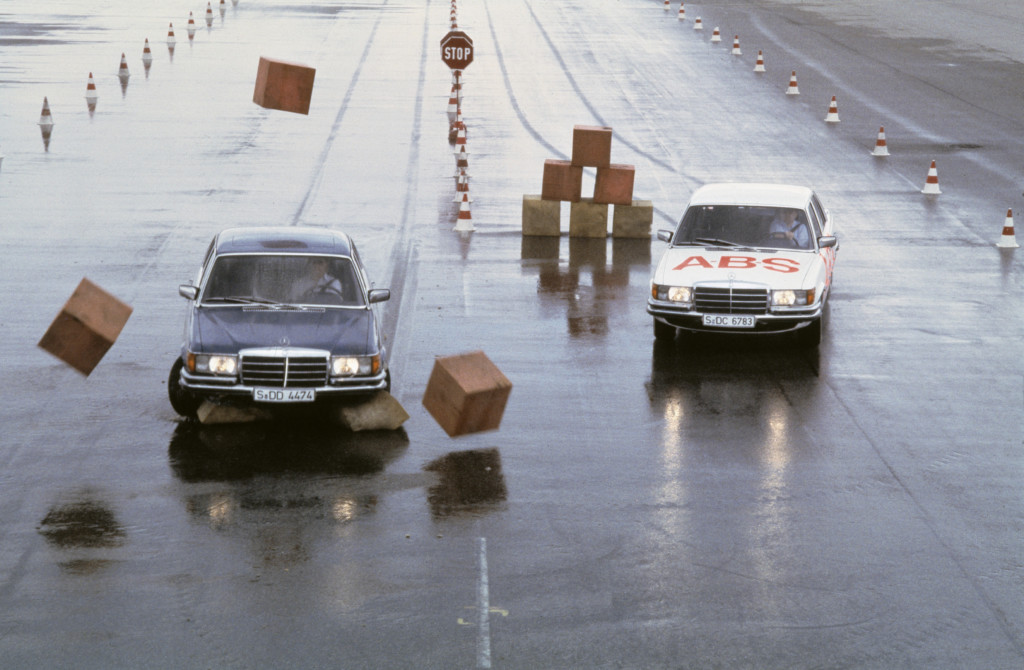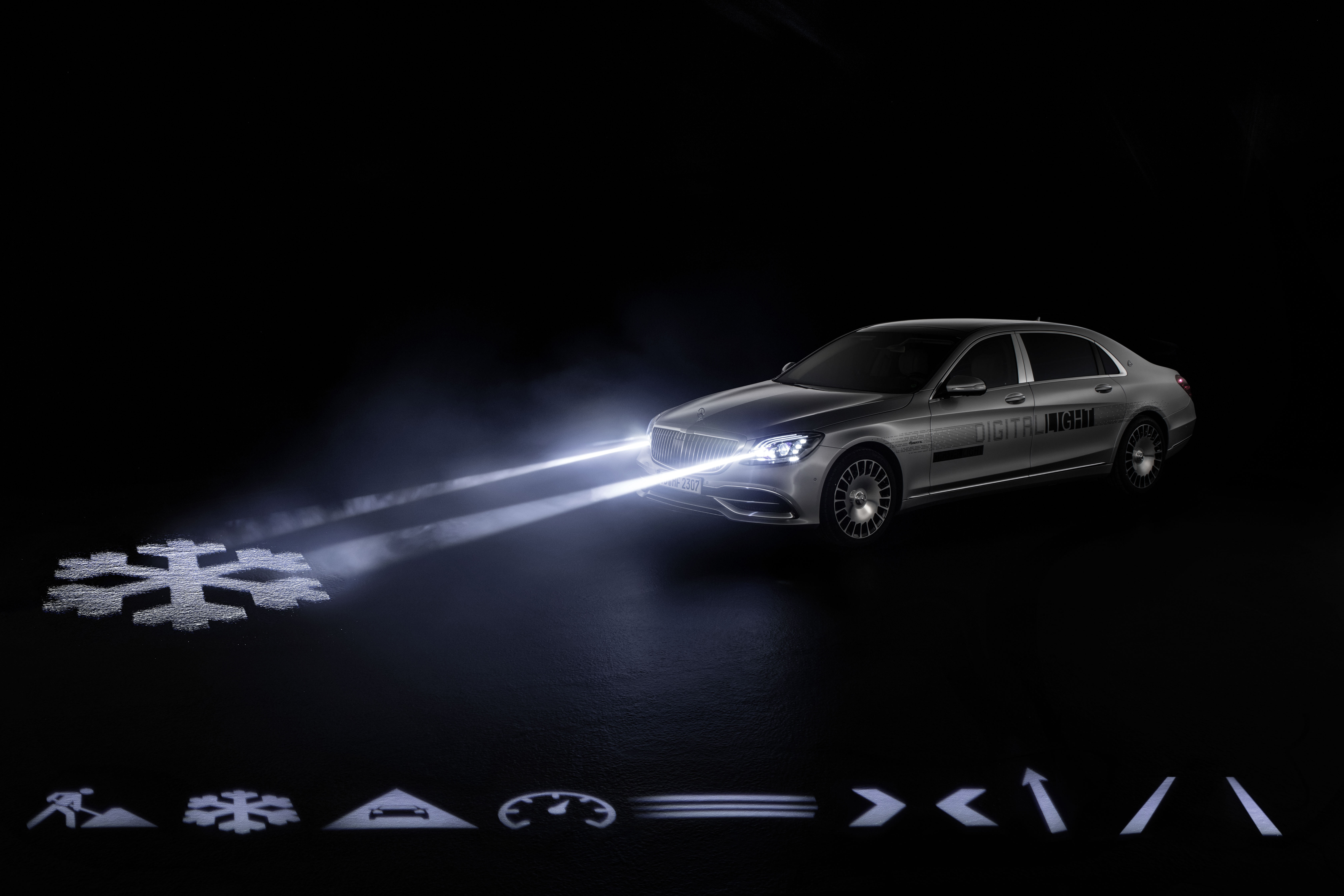Small Lights with a Big Future


Small Lights with a Big Future
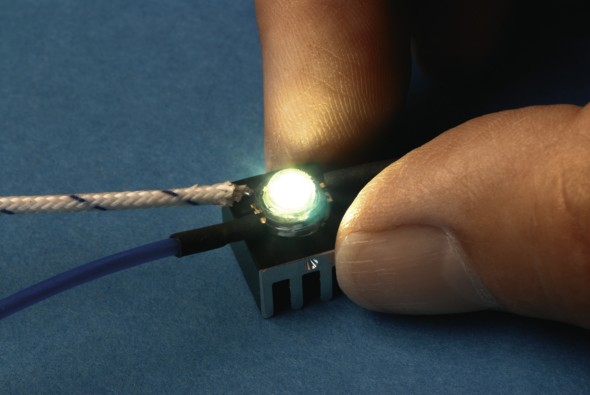
DaimlerChrysler researchers are working on the lighting technology of tomorrow. Installed in headlights, powerful light-emitting diodes can provide superior illumination and enhanced safety. Using LEDs in vehicle-to-vehicle communication is yet another interesting possibility.
Light-emitting diodes, or LEDs, have been used in automobile tail-lights and brake lights for a number of years now, and they could well become standard issue for headlights and interiors of new passenger cars in the foreseeable future. These crystalline semiconductor diodes, which directly convert electric current into light, promise a whole range of benefits in vehicle manufacture.
Thanks to their greater efficiency, they require less energy and are also much more responsive than standard filament lamps, for example, which means they can be switched rapidly on and off. At the same time, they take up less room, have a long service life and are not sensitive to jolts. “Given all these properties, LEDs are a sure bet for mobile applications, especially when you consider that the power of white LEDs has increased by 50 percent over the last two years alone,” explains Dirk Streichert, head of the Total Vehicle, Interior and Exterior Systems department at DaimlerChrysler Research.
The current Mercedes-Benz E-Class and the F 600 Hygenius, DaimlerChrysler’s latest research vehicle, are proving that LEDs are suitable for more than just tail-lights and brake lights. In the E-Class, for example, LEDs are used for the sidelights and also the vehicle interior, where they play an important role in the ambient lighting concept (see “Comfortable with Safety,” page 62/63). In the F 600 Hygenius, LEDs are used for the turn signals and the headlights.
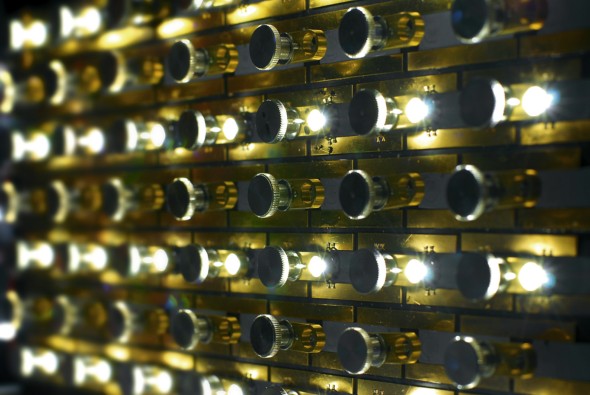
More freedom for developers and designers
Vehicle developers and designers have high hopes for LED headlights. In contrast to conventional light bulbs, for example, light-emitting diodes only emit light straight ahead. This means they don’t have to be installed in deep reflectors, which opens up new possibilities for automotive designers planning the fronts of tomorrow’s vehicles.
What’s more, experts are confident that white multi-chip LEDs will be capable of delivering the same output as today’s xenon lamps within four years. By that time, they will be offering a number of overwhelming advantages. LED headlights will be able to generate a bright light similar to daylight, while also being suitable for a much wider range of applications than today’s high-tech headlights, which feature active and cornering light functions in addition to the usual high-beam, low-beam and fog lights (see page 61).
And in order to replicate this cornering light function, LEDs don’t require a sophisticated mechanical system for swiveling the headlight from side to side. Instead, the same effect can be achieved by using an array of high-performance LEDs fixed to a circuit board, whereby each of them can be individually activated in order to control the distribution of light according to the requirements of the situation at hand.
Were all the LEDs to be switched on at the same time, this would illuminate a large area in front of the vehicle but also dazzle oncoming traffic and pedestrians. The secret is therefore to switch on certain configurations of LEDs according to the degree of illumination required, rapidly producing the precise beam of light that’s needed on the road surface.
“We’ll be able to create every conceivable type of lighting — high-beam, low-beam, the active light function, fog lights and highway lights — purely electronically and without the need for any moving parts like those currently required for the active light function,” says Streichert. “What’s more, according to the specific driving situation, LED arrays can also be used to create new functions, such as an enhanced night-view system or a dynamic beam distribution.”
The latter function will make it possible for high-beam headlights to continuously adapt in response to oncoming traffic, for instance. This is thanks to the very impressive responsiveness of the LEDs and a camera installed behind the windshield, which registers oncoming vehicles and continuously calculates their distance using a computer. On the basis of this information, an electronic control unit then dips the high-beam light as required, thus resolving the conflict between preventing oncoming traffic from being dazzled and achieving the greatest possible safety in every driving situation.
In addition, special LEDs could help enhance the effectiveness of the night-view assist system even further. This driver-support system, which celebrated its world premiere in the new S-Class last year, features an infrared headlight and an infrared camera.
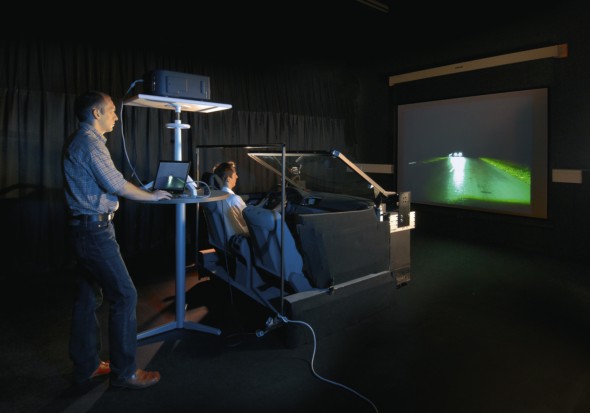
Low-energy LEDs for daytime headlights
Experts are also very optimistic about the potential of infrared LEDs. “Infrared LEDs, which are still being developed, emit light at a wavelength of 850 nanometers, which means they are even more suited to the sensitivity of an infrared camera than today’s infrared headlights. That will increase the range of today’s night-view assist system by as much as 50 percent,” explains Jörg Moisel, head of Lighting Innovation at DaimlerChrysler Research. “The so-called pulse control operation of the infrared LEDs also means that vehicles fitted with night-view assist will not dazzle each other when they meet.”
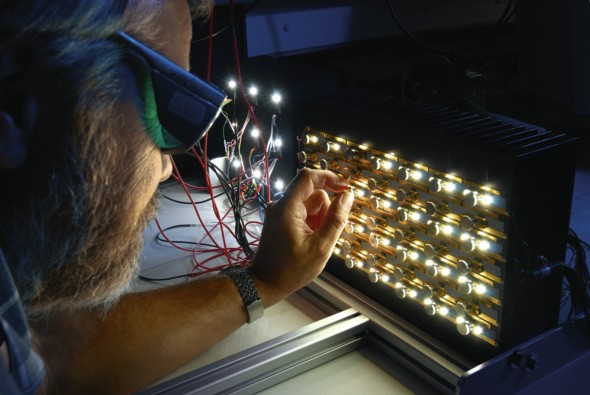
The experts are certain that it is only a matter of time before LED lighting establishes itself as the industry standard. In the U.S., for example, the use of LEDs has already been approved for the principal headlight function, and Europe is expected to follow suit by 2008. Likewise, the advent of compulsory daytime headlights in Germany in 2010 could mean an enormous boost for these robust and energy-saving lights. Over the next three years, their power requirement should fall to around half of that of a conventional filament lamp of a similar brightness.
Researchers at DaimlerChrysler are also looking beyond the technical challenges. For example, they are investigating the potential level of customer acceptance for LED headlights and for the kind of functions the little lights will make possible. The team led by Goetz Renner, head of the Customer Research Center in Böblingen, is currently studying how well test subjects are able to recognize and assess different road situations under a variety of illumination conditions.

Variable illumination of potential hazards
“This involves showing test subjects realistic nighttime driving situations with a number of different potential hazards, such as a pedestrian on the roadside or a deer in the middle of the road. They then have to respond as quickly as possible by pressing a button to indicate whether they have registered the hazard on the right, left or in the middle of the scene,” reports psychologist Kai Geertsema, a member of Renner’s team.
The images that Geertsema projects onto the wall of the test lab depict a highly realistic driver’s-eye view of dangerous situations that present themselves on an unlit country road, illuminated first with normal low-beam headlights and then with an additional LED spot, which produces a light very similar to daylight. Depending on the actual distribution of the LED light on the road surface, the test subjects find they are able to recognize certain hazards earlier than others.
The subjects are also asked for their subjective impressions of the additional illumination provided by the LED spot. “Their response is generally positive,” says Geertsema. “And when we register an unusually long reaction time for the majority of test persons in a particular lighting situation, that’s a sign telling us that the illumination wasn’t ideal.”
There’s a very simple reason behind these concerted efforts to develop the optimal vehicle lighting: accident prevention. In Germany, 42 percent of all road fatalities and 27 percent of all serious traffic accidents involving injured vehicle occupants happen at night, despite the fact that the volume of traffic is significantly lower than it is during the daytime.
Engineers are also confident that LED tail-lights and brake lights — already in successful use for several years now — will play an important role in making roads and highways even safer.
For example, LED brake lights achieve full brightness about 150 milliseconds faster than a conventional filament lamp. This may sound like a minimal time advantage, but it can be enough to provide a decisive safety benefit. In fact, tests conducted with the DaimlerChrysler driving simulator in Berlin have shown that the braking distance for a vehicle being driven at a speed of 130 km/h is reduced by around 15 meters when LED brake lights are used to warn drivers of impending danger, enabling them to react more rapidly.
“In the future, LED brake lights could also serve other functions well beyond their original lighting purpose,” explains Arnulf Frisch, head of
Innovation at the Exterior Lighting department of DaimlerChrysler Research. One possible use for the rapid light pulses generated by LEDs is to transmit data from one vehicle to another following behind. The impulses transmitted by LED brake lights could be used to communicate information on the vehicle’s actual rate of braking, for example. A receiver in the following vehicle would pick up this data and transmit it to the brake assist, which would adjust braking power accordingly.
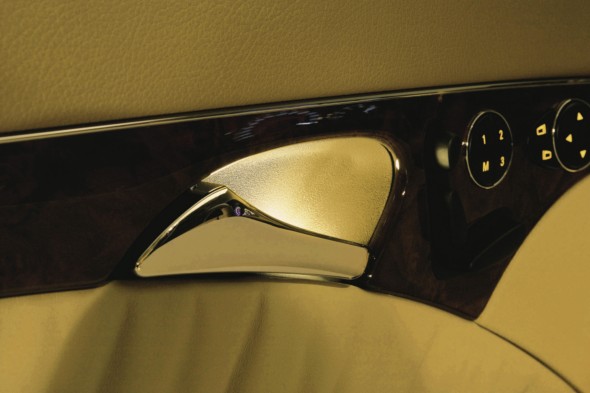
Light for a vehicle’s lifetime
Initial tests conducted with such innovative car-to-car communications have shown how rapid and powerful LED brake lights are: Using light to transfer data makes it possible to transmit eight megabytes of information per second over a distance of up to 130 meters. As Frisch explains, “This means LED technology is providing us with another opportunity to reduce rear-end collisions.”
A further advantage of LEDs in rear lights is that the tiny diodes are practically failsafe, because they don’t burn out like filament lamps. This means that tail-lights, brake lights, turn signals and rear fog lights always function, making the vehicle constantly visible to traffic behind, which again boosts safety.
And, last but certainly not least, LEDs also make life much easier for the driver. With a service life of between 10,000 and 20,000 hours, LEDs easily outlive the average car. In other words, replacing bulbs will become a thing of the past — LEDs last a whole vehicle lifetime.
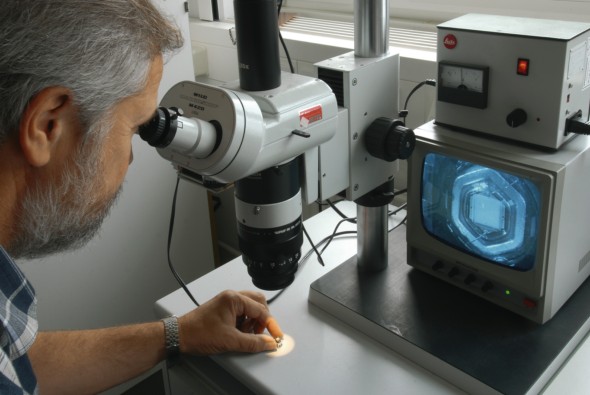
Creating the right light for every visibility
The Intelligent Light System (ILS) in the Mercedes-Benz E-Class demonstrates which new lighting functions are possible today. The two high-tech ILS headlights feature gas discharge lamps — not LEDs — in combination with a sophisticated system of optical lenses and electromechanical rollers to modify the beam of light. This creates a total of five different lighting functions (also an option for right-hand-drive models) that are specially tailored to specific driving or weather conditions.
The “country road light” function is similar to a conventional low-beam light but provides greater illumination of the left-hand side of the road in particular, where visibility is increased by 10 meters. This generates a significant increase in safety. And in combination with the other four lighting functions, it contributes to reducing the high risk of accidents when driving at night.
The “highway light” function improves the driver’s range of vision by as much as 60 percent compared to standard low-beam headlights. At speeds above 90 km/h, the xenon headlights are automatically switched from 35 to 38 watts. And at 110 km/h and above, the range of the headlights is so enlarged as to illuminate the entire width of the road to a distance of around 120 meters.
The “enhanced fog light” function provides more illumination for the middle of the road or lane and reduces the glare from the reflection caused by fog or falling snow. This is achieved by swiveling the headlight on the driver’s side outward by eight degrees and lowering the light cone. This new lighting function is automatically activated whenever the rear fog lamp is switched on and the E-Class is not traveling faster than 70 km/h. At speeds over 100 km/h, the enhanced fog light is automatically deactivated.
The “active light” function was introduced by Mercedes-Benz in 2003 and enhanced for the new E-Class. It increases road surface illumination by 90 percent and provides an extra 25 meters range of vision in curves with a radius of 190 meters. In the enhanced version, the swivel range has been increased to 15 degrees. The headlights move according to the vehicle’s speed, yaw rate and steering-wheel angle. The active light function works in conjunction with the “country road” and “highway” headlight modes.
The “cornering light” function was introduced by Mercedes-Benz in 2004. This function has an additional lateral range of around 30 meters, so it illuminates areas at intersections and junctions that would otherwise remain unlit. The cornering light is automatically activated when the main headlights are on and the driver either operates the turn signal or turns the steering wheel while moving at speeds of less than 40 km/h.

The tiny electronic lights are subjected to a wide array of tests. Here, a researcher measures the thermal resistance of an LED.
Researchers wear tinted glasses to protect their eyes against the powerful light output of the LEDs.
A continuous test reveals whether the light-emitting diodes lose any of their intensity after hundreds of hours of operation.
LEDs are subjected to a variety of routine tests, including inspection under an optical microscope (far left). A researcher prepares to use an Ulbricht Sphere to measure the luminous flux of an LED array.
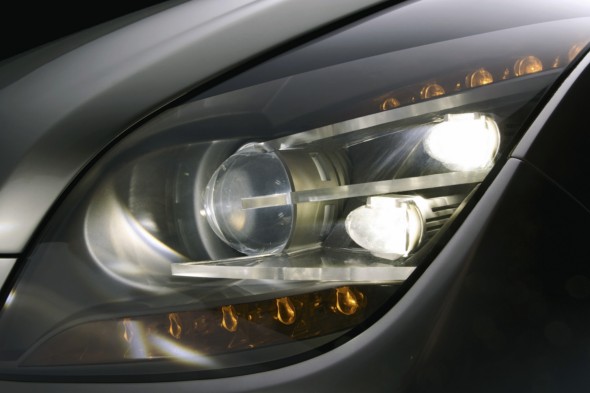
The F 600 research vehicle is fitted with LED headlights.
In the future, vehicle headlights will feature LED arrays.
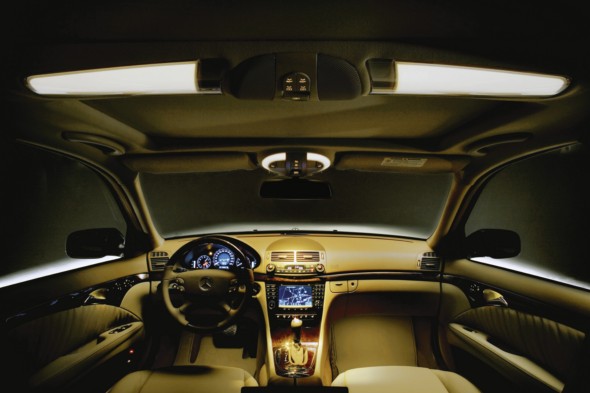
In the visual laboratory, test subjects are shown a variety of nighttime driving situations. As soon as a hazard appears, they must immediately press a button to indicate whether the danger is coming from the left or right. The aim is to determine the optimal lighting with LED headlights.
Ambient interior lighting enhances nighttime perception and driving safety
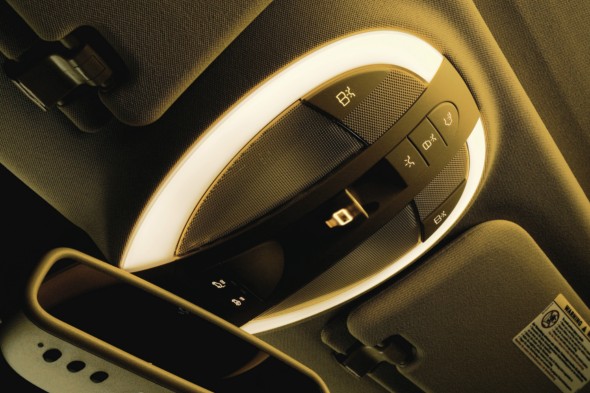
Light has a direct impact on a person’s mood — and if it’s lacking entirely, motivation and performance suffer. For this reason, ensuring proper interior lighting in a vehicle makes its occupants safer.
The pineal gland in the human brain is barely bigger than a pea, yet it exerts an immense power over us. In darkness, it secretes the sleep hormone melatonin, which results in drowsiness. This is a natural mechanism that ensures the body will rest and recover at night. By the same token, it can lead to problems when we need to stay awake during the hours of darkness — when working on the night shift, for example, or driving in the dark. The concentration of melatonin in the blood is constantly below 0.05 nanomoles during the daytime, but it rises sharply from around 9:00 p.m. onward, reaching its maximum, four times this value, by around 3:00 a.m.
“The danger of falling asleep behind the wheel is one reason why nighttime driving is disproportionately dangerous,” says psychologist Goetz Renner, head of DaimlerChrysler Research’s Customer Research Center in Böblingen. This is why Renner’s team is looking at how the use of an intelligent lighting concept for a vehicle’s interior can have a positive influence on the driver’s well-being and attentiveness.
Psychologists and ergonomists are well aware that light not only provides illumination but also stimulates the body — psychologically and physiologically — thereby boosting performance. Although the interior lighting for a vehicle needs to be much less intense than that in an office or a workshop, for example, the fact remains that where light is completely lacking, motivation and performance are diminished. “That’s why the aim of the ambient interior lighting concept developed for the E-Class is to increase the well-being of drivers and passengers while boosting driving safety,” explains Renner.
Clever lighting for a pleasant atmosphere
The ambient interior lighting concept comprises a mixture of diffuse, scattered and precisely focused light, delivered by a combination of conventional lamps and light-emitting diodes (LEDs). “The E-Class is the only car in its market segment to feature such a sophisticated and well-conceived interior lighting concept,” says Renner.
This not only includes indirect illumination of all the major switches and controls, as well as LEDs fitted in the door handle recesses and footwells; it also features special illuminated trim to frame the front and rear overhead control units, providing especially pleasant mood lighting for nighttime driving. The ambient lighting concept also features an LED installed in the interior mirror, which shines directly onto the switches in the center console.
The diffuse light in the front part of the vehicle can be dimmed using a total of five settings. In the rear of the E-Class, passengers are able to adjust the brightness of the lighting by means of two switches in the overhead control unit.
The overall effect provided by the ambient lighting concept is to bathe the vehicle interior in a soft, glare-free light that is still very practical. “As a result, vehicle occupants also have the opportunity to appreciate the sense of spaciousness and the high-quality finishing of the interior when driving at night,” Renner emphasizes.
This sophisticated lighting concept also makes a big contribution to vehicle safety in the E-Class. For example, it provides excellent orientation for the driver and front passenger, enabling them to locate and operate switches and control in the center console with ease.
Finally, good ambient lighting in a vehicle also boosts a factor to which DaimlerChrysler Research attaches particular importance: physiological well-being. Renner explains this principle: “Enhanced physiological well-being is achieved when the technology of an automobile is so advanced that it reduces the driver’s workload and sustains or even improves his or her driving performance in some way. This then frees drivers to focus their energies and concentrate more closely on the traffic, while ensuring that they remain fit enough to handle critical situations with confidence and control.”
Good ambient lighting in a vehicle enhances occupants’ well-being and safety

Jump in and relax: the new ambient interior lighting concept in the Mercedes-Benz E-Class. In addition to all the usual interior lighting features, it also includes soft lighting elements incorporated into the roof liner and recesses of the door handles.

